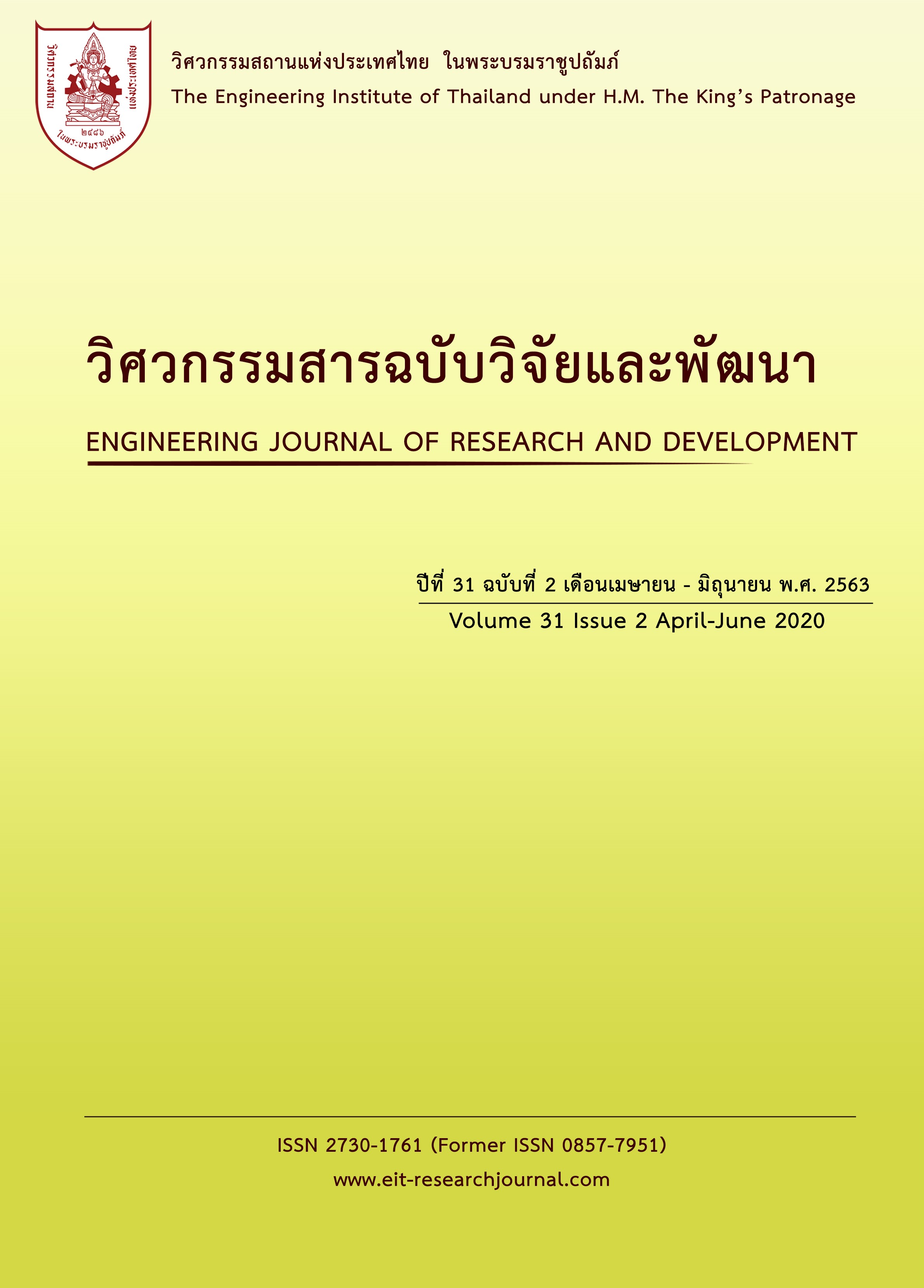อิทธิพลความเข้มข้นเริ่มต้นและอุณหภูมิที่มีผลต่อการดูดซับโลหะหนักของดินเหนียวเบนโทไนท์ผสมกับปูนซีเมนต์ปอร์ตแลนด์
Main Article Content
Abstract
This research presents the influence of initial concentrations of heavy metals and temperatures on the ability to absorb copper (Cu), nickel (Ni) and zinc (Zn) with bentonite clay mixed Portland cement. Bentonite clay is widely used as a waterproofing material in hazardous waste landfills, The mixture of bentonite clay and Portland cement can increase the adsorption capacity when compared to heavy metal adsorption with bentonite clay. The results described clearly from a series of batch sorption test and adsorption Isoterm model. In the study, varieties of initial concentrations of Cu, Ni and Zn were prepared. The adsorption of bentonite clay mixed with Portland cement by batch sorption test showed that during the period of 48 to 120 hours, the concentration of the heavy metal solution entered the equilibrium state and had the potential to adsorb more when the initial concentration of heavy metals increased. The Langmuir isotherm model can effectively explain the adsorption behavior of bentonite mixed with Portland cement. The highest amount of absorbed heavy metal solution per approximation ( ) respectively is Cu> Zn> Ni. The influence of different temperatures affects in the ability to absorb heavy metals; the adsorption increases as the temperature increases.
Article Details
The published articles are copyright of the Engineering Journal of Research and Development, The Engineering Institute of Thailand Under H.M. The King's Patronage (EIT).


